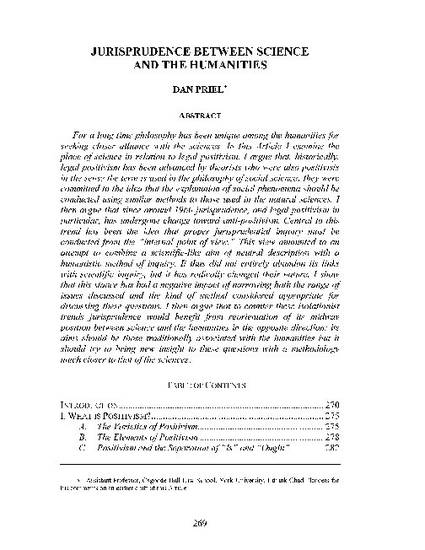
For a long time philosophy has been unique among the humanities for seeking closer alliance with the sciences. In this Article I examine the place of science in relation to legal positivism. I argue that, historically, legal positivism has been advanced by theorists who were also positivists in the sense the term is used in the philosophy of social science: they were committed to the idea that the explanation of social phenomena should be conducted using similar methods to those used in the natural sciences. I then argue that since around 1960 jurisprudence, and legal positivism in particular, has undergone change toward anti-positivism. Central to this trend has been the idea that proper jurisprudential inquiry must be conducted from the "internal point of view." This view amounted to an attempt to combine a scientific-like aim of neutral description with a humanistic method of inquiry. It thus did not entirely abandon its links with scientific inquiry, but it has radically changed their nature. I show that this stance has had a negative impact of narrowing both the range of issues discussed and the kind of method considered appropriate for discussing these questions. I then argue that to counter these isolationist trends jurisprudence would benefit from reorientation of its midway position between science and the humanities in the opposite direction. its aims should be those traditionally associated with the humanities but it should try to bring new insight to these questions with a methodology much closer to that of the sciences.
